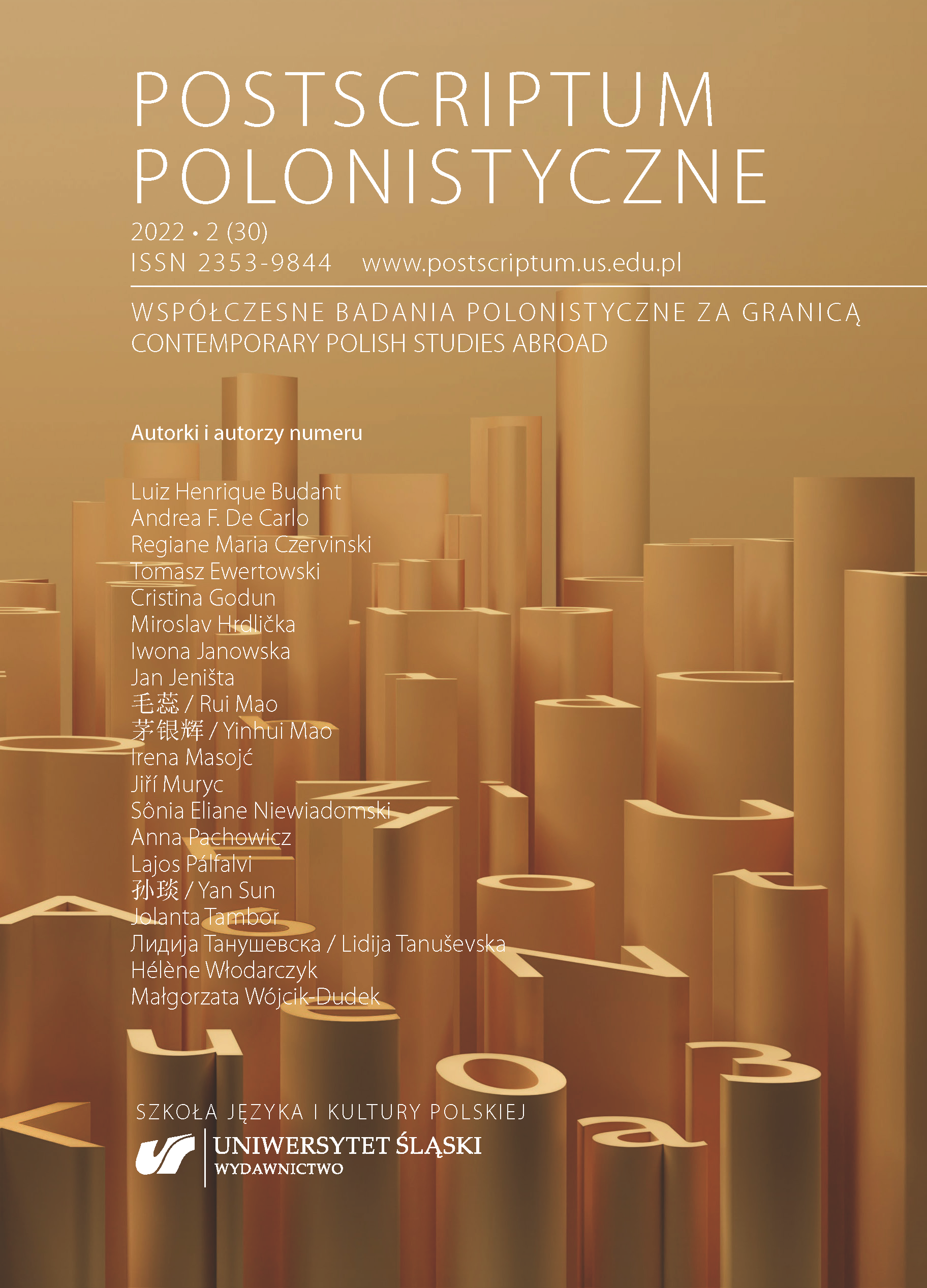Како ја читам полската литература
How I Read Polish Literature
Author(s): Lidija TanushevskaSubject(s): Philosophy, Cultural history, Studies of Literature, Recent History (1900 till today), Polish Literature, 18th Century, 19th Century, Philology, Translation Studies, Theory of Literature
Published by: Wydawnictwo Uniwersytetu Śląskiego
Keywords: Polish liteature; fantastic fiction; Romantism; modernity; worldlyness
Summary/Abstract: The article is conceived of as an outline of the most intriguing works of Polish literature, briefly described in order to entice Mecedonian readers to learn about Polish literary heritage. First, the author indicates to the merits of Polish literature; most of all by pointing to the number of the Nobel Prize in Literature recipients and to the fact that not solely works written both in Poland and in Polish may be classified as Polish literature, but also those created in Latin, French, and English, etc. She refers to the latter when substantiating the reasons for listing the legends contained in the Old-Polish chronicles, among others the one by Gallus Anonymus, as the ones to be read first; the very same reasoning justifies mentioning Jan Potocki’s Manuscrit trouvé à Saragosse. The author is of the opinion that acquainting oneself with the belles lettres resembles educating a child through literature: first, he or she reads fables, fairy tales, and illustrated books, then realist literature, to finally search for more demanding forms like absurdist, superrealist – briefly put: peculiar and separate. This way the author makes her selection of Polish literary works and establishes her article’s structure: from medieval literature to the contemporary prose by Olga Tokarczuk. According to the author’s outline, the greatest of Polish Romantic poets, Adam Mickiewicz, occupies prominent place in Polish literature; he is characterised as an author of fantastic stories born out of folklore, but also of the works which forged national identity and patriotism, the identity of the kind to suffer and die for. Next, what is presented in the article is a didactic experiment carried out at the “Blazhe Koneski” Faculty of Philology, Ss. Cyril and Methodius University in Skopje. It aimed to acquaint stundents, in the space of one semester, with five texts representing the Polish literary canon, instead of analysing a particular literary epoch. The following works were chosen: Bez dogmatu [Without Dogma] by Henryk Sienkiewicz, Sklepy cynamonowe [The Cinnamon Shops] by Bruno Schulz, Zniewolony umysł [The Captive Mind] by Czesław Miłosz, Imperium by Ryszard Kapuściński, and Bieguni [Flights] by Olga Tokarczuk. Upon discussing the consecutive works, a clear rationale was arrived at and elucidated based on which the said books had been selected as those representing what is the best in Polish literature. In her summary, the author concludes that Polish literature constitutes an inexhaustible source of new literary forms and in many aspects it is on a par with world literature.
Journal: Postscriptum Polonistyczne
- Issue Year: 30/2022
- Issue No: 2
- Page Range: 1-12
- Page Count: 12
- Language: Macedonian

